A veritable open-air museum of architecture, Malmö is a city that any fan of beautiful buildings should visit and savor. Sweden’s third-largest city, it’s big enough to be diverse and multi-layered, but so compact that one can cover the Old Town and surrounding neighborhoods on foot in a couple of days.
A quick train ride from Copenhagen, it’s like a welcoming new friend; within a short time, it can feel intimately familiar, contrary to its image as a purported hotbed of crime and social problems.
Its best known architectural highlights include the Town Hall, Malmö Castle, and Turning Torso, Scandinavia’s tallest building. However, there’s so much more.
Here we profile six of its lesser-known architectural gems as a jumping-off point to explore this underrated city:
 Flensburgska Huset (1595)
Flensburgska Huset (1595)
Sitting inconspicuously at a street corner in the Old Town, this building is Malmö’s most intact surviving example of Christian IV style, a Scandinavian version of Dutch Renaissance architecture. Characteristic features include gables and horizontal lines, in this case, provided by stone accents contrasting with the red brick facade. If the gate is opened, wander into the courtyard to see other details including dormer windows.
 |
 |
Attributed to builder Daniel Thommisen, over the centuries it has shifted between residential and commercial uses, with occupants including 17th-century mayor Söffren Christensen, a warehouse, a glove factory, city offices, and a clothing store.
 |
It is named for the Flensburg family, who owned it from 1827 until 1964 when Eva Flensburg passed away and bequeathed it to the city. She was an advocate for historic preservation and in the 1930s commissioned building restoration work and a book recording its history.
The courtyard is enclosed by an attached building and collectively the complex is called Flensburgska Gården. The other building is a comparatively new structure from the 1870s that replaced older ones.
 |
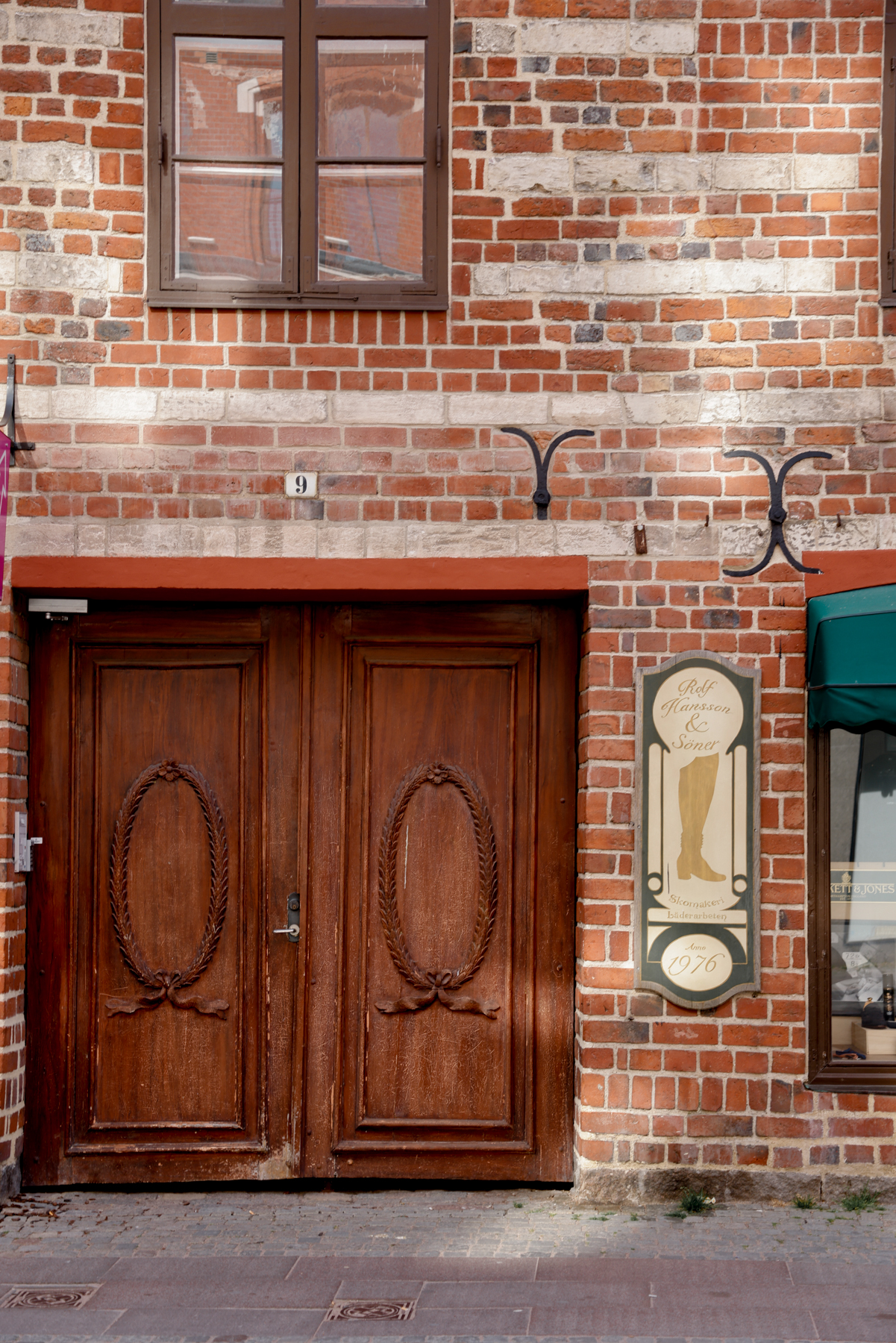 |
Flenburgska Huset
Södergatan 9
211 34 Malmö
 Hotel Kramer (1875)
Hotel Kramer (1875)
During the 19th century, Scandinavia was more a follower of architectural tradition and styles from outside the region than the innovator it became in the 20th century. Nevertheless, the region’s architects produced some well-executed copies of great European architecture.
 |
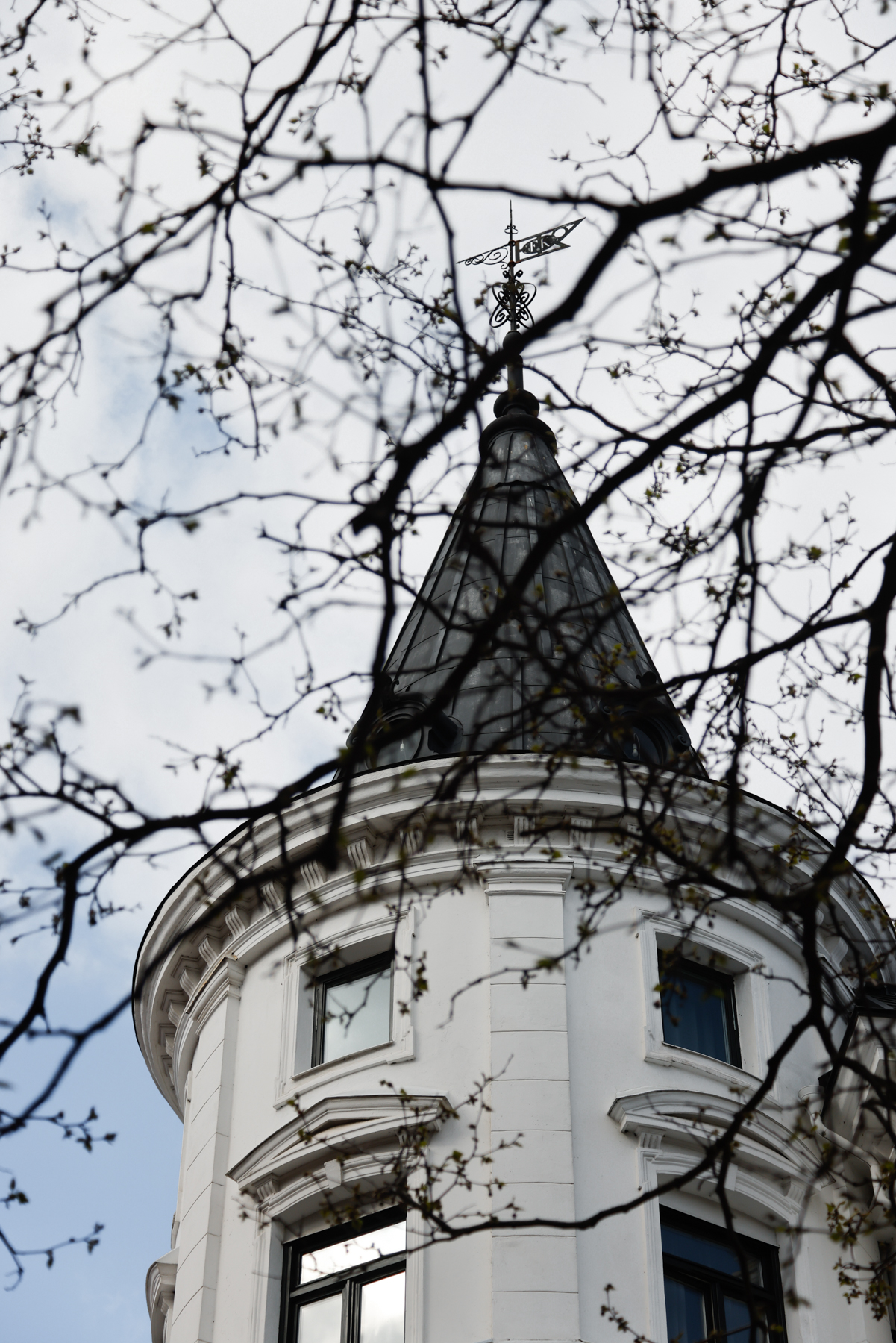 |
 |
|
Case in point, the grandiose Hotell Kramer from 1875. Looking as if it was transplanted from the Loire Valley, Danish architect Carl Ferdinand Rasmussen designed it in an elegant French chateau-style with corner turrets and mansard windows. It still provides accommodations as part of the Scandic chain.
It faces Stortorget, The Great Square, which dates from the 16th century and includes better known architectural landmarks including the Town Hall and Apoteket Lejonet. Despite its august surroundings, the square has lost some of its luster, with much of it dedicated to parking instead of pedestrians. Plans to transform it into a more attractive public open space, percolating since 2008, remain unrealized despite local efforts for a more fitting design.
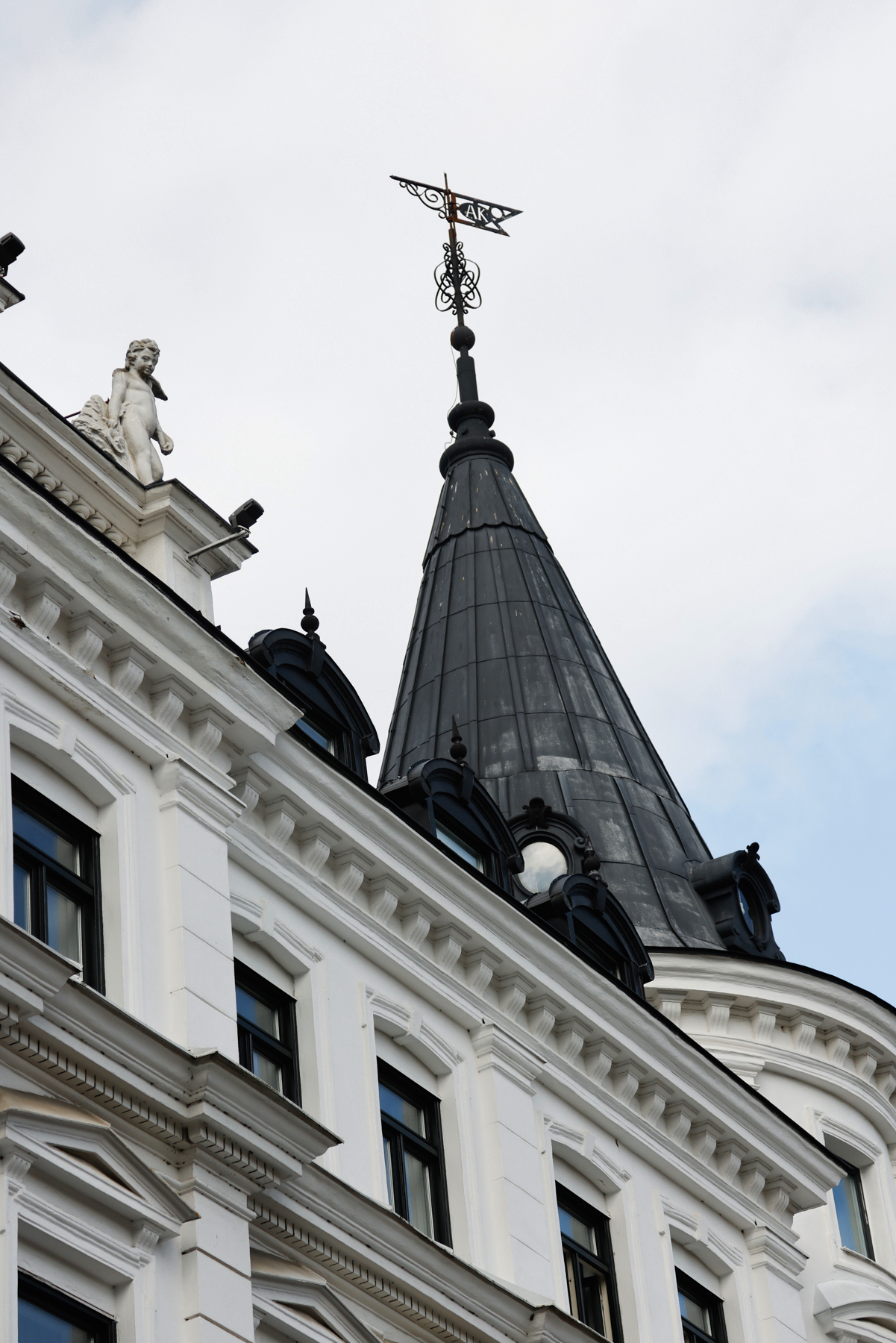 |
 |
Scandic Kramer
Stortorget 7
211 22 Malmö
 Sparbanken Bikupan (1909, 1914)
Sparbanken Bikupan (1909, 1914)
This Old Town building is relatively new. It was constructed in two phases in 1909 and 1914 for Sparbanken Bikupan, a local savings bank. The word “Bikupan” appears above the main entrance on Östergatan; it means “Beehive,” presumably an allusion to the industriousness of bees and the hive’s efficient organization.
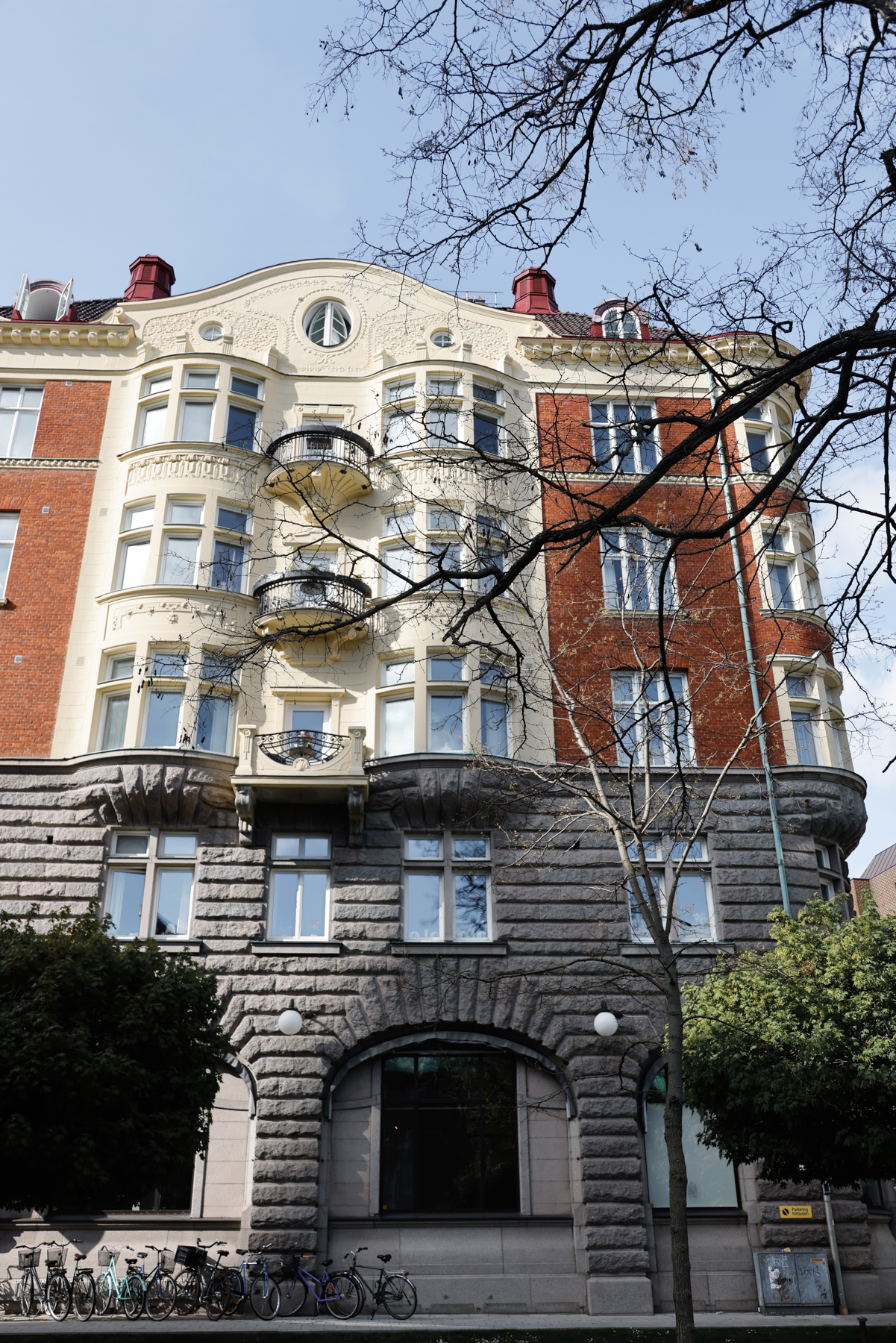 |
 |
It was designed by Malmö architect Johan “John” Smedberg and is considered an example of Art Nouveau architecture, also known as Jugendstil, due to the many curves in its facade and use of floral themed ornamentation. Although built for a bank, it also includes apartments on the upper levels. The ground floor is now occupied by a showroom for designer kitchen firm Kvänum.
It is next to and a bit overshadowed by one of Malmö’s major sights, Sankt Petri kyrka (St. Peter’s Church), the city’s oldest existing building which dates from the early 14th century. The church grounds provide a vantage point to admire Sparbanken Bikupan’s fine details, and its beautiful granite and brickwork.
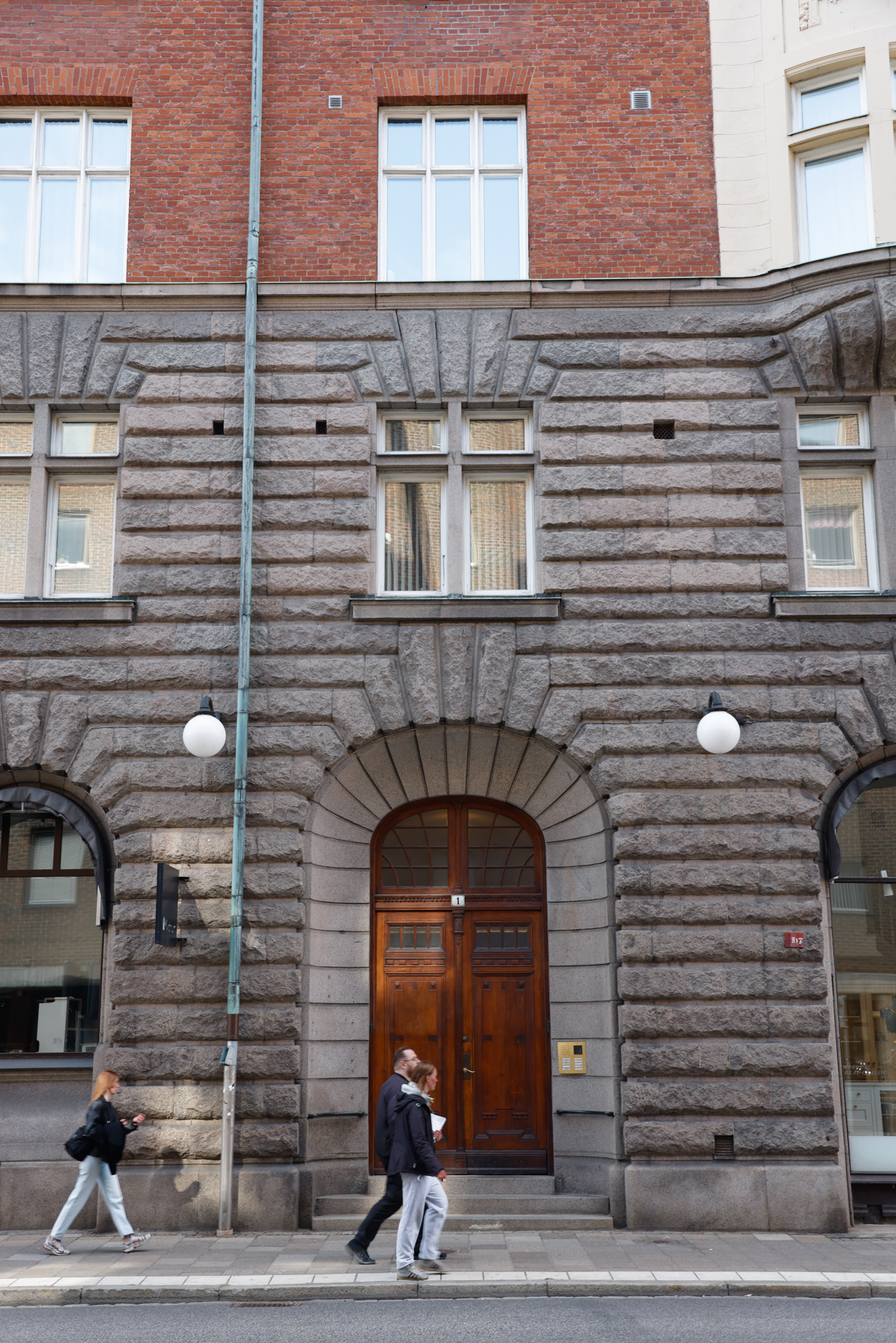 |
 |
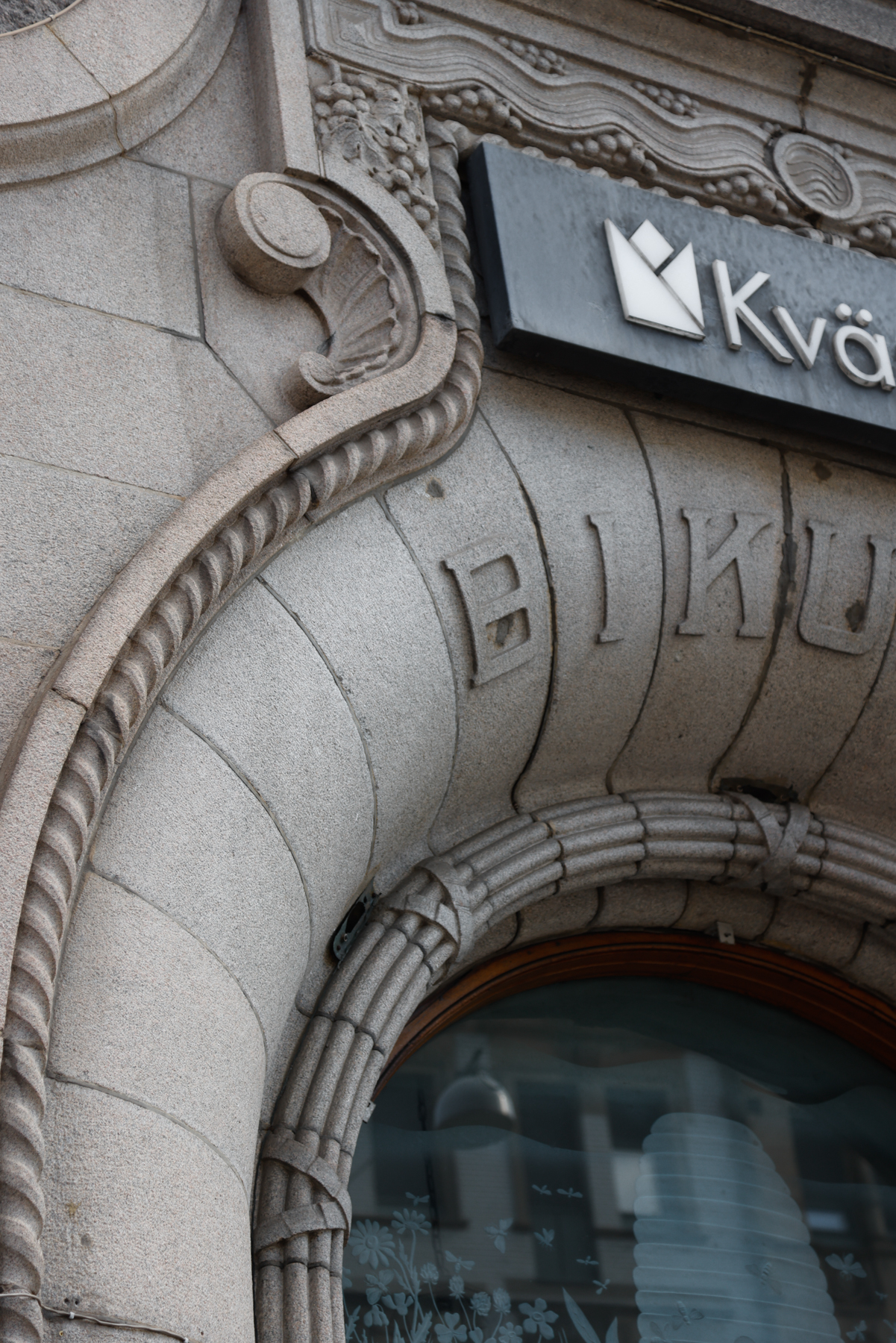 |
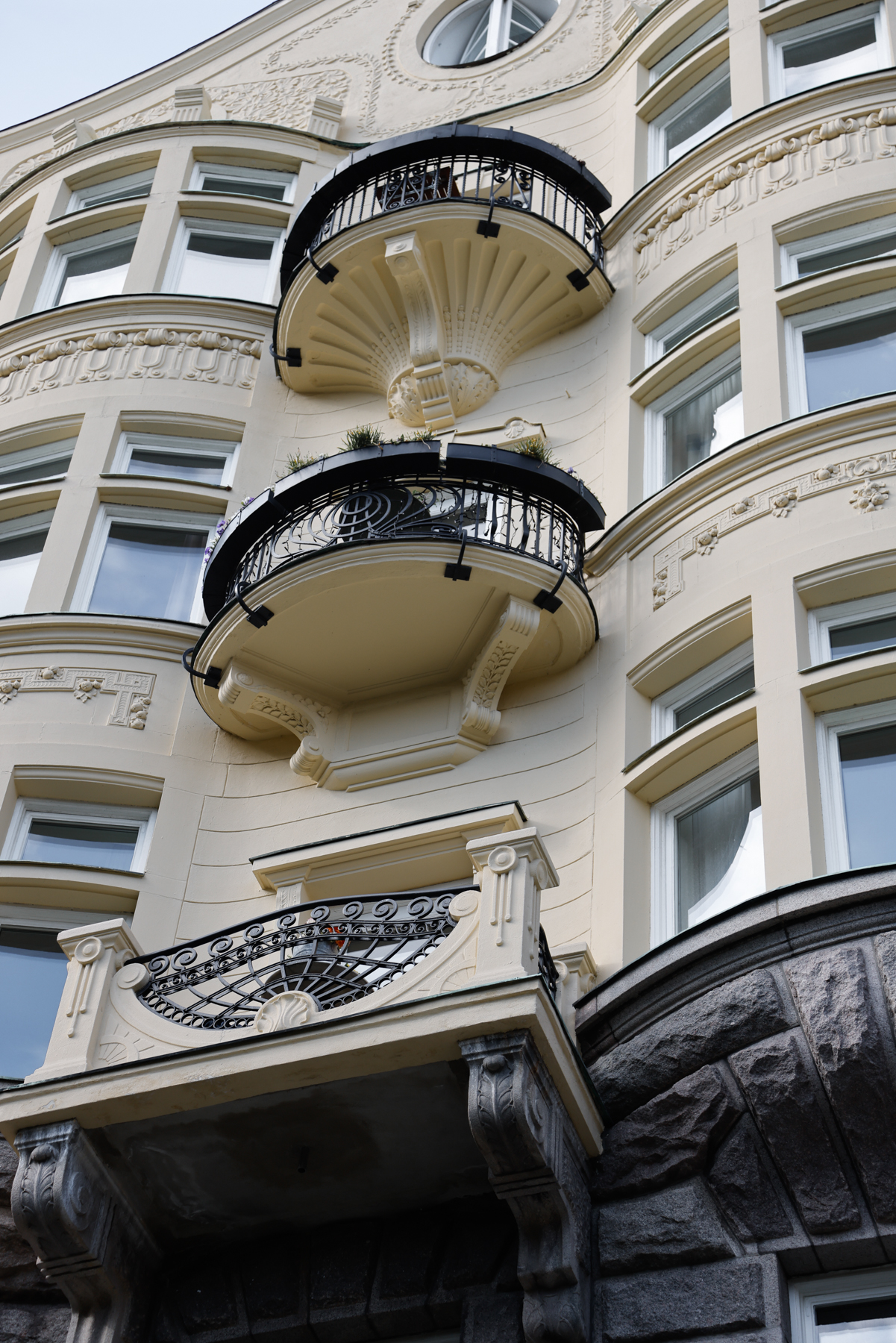 |
Sparbanken Bikupan (Former)
Östergatan 28
211 22 Malmö
 Kockumshuset (1958)
Kockumshuset (1958)
This 65-meter tall skyscraper designed by Paul Hedqvist was built in the Western Harbour area as the headquarters of Kockum, operator of a nearby shipyard. With its glass, metal, and concrete facade and setting amidst a plaza and surface parking lot, it is an example of Mid-Century Modernism.
 |
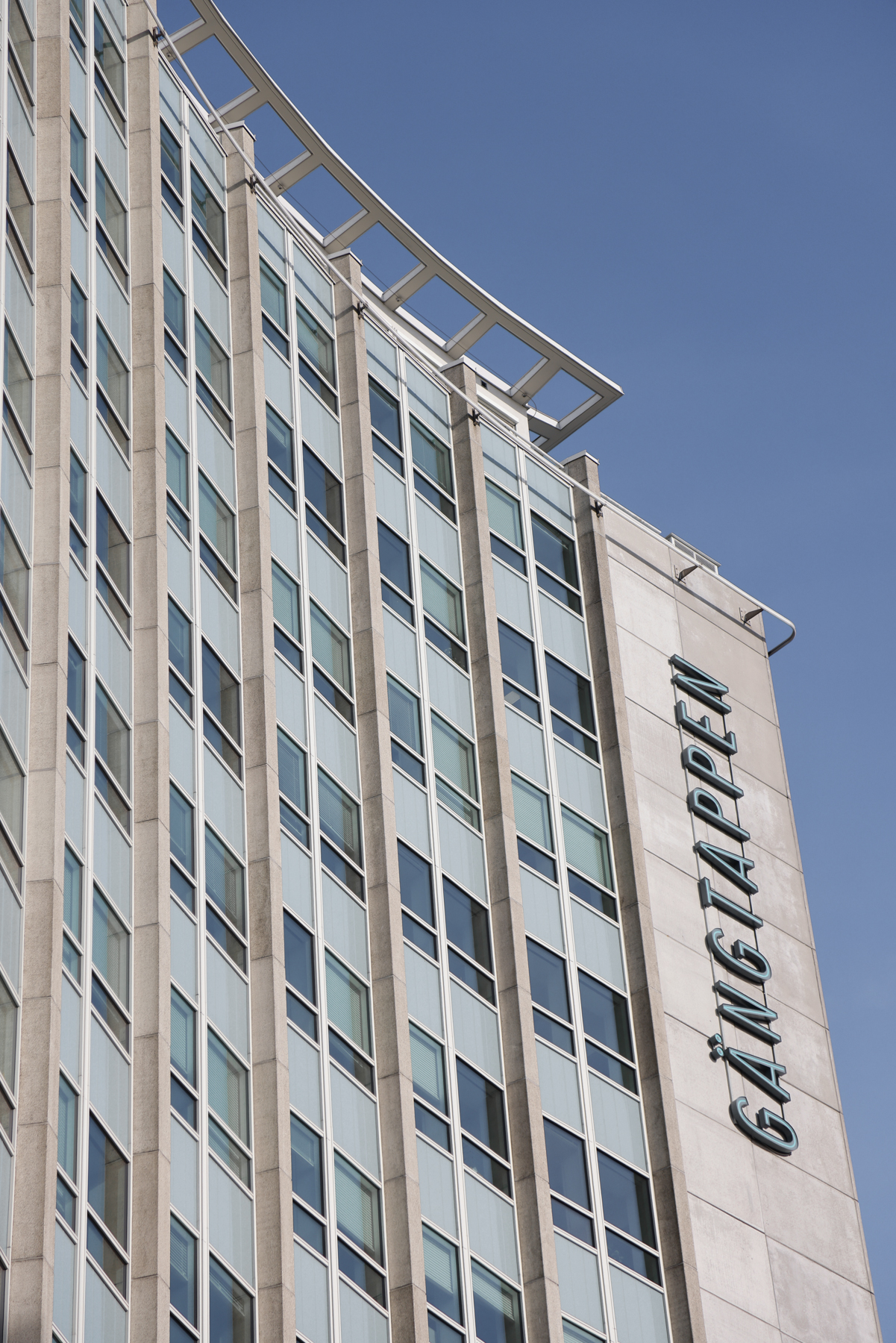 |
However, Kockumshuset represents an expressive variation from pure functionalism, akin to Jørn Utzon’s Sydney Opera House. It is three-sided with concave walls and a prominent glass-enclosed spiral staircase. Popularly known as Gängtappen, which roughly translates as thread pin, it is widely seen as resembling an industrial implement, an apt symbol of Malmö’s 20th century industrial might.
In 1974 Kockum constructed a massive waterfront gantry crane (175 meters long and 140 meters tall), which became a local landmark. However, the shipyard closed in the 1990s and the crane moved to South Korea in 2002 (breaking many Malmö hearts). Kockum sold the office building in 2009, FOJAB architects renovated it in 2016, and it is now owned by an insurance company with tenants including Spill, a gourmet restaurant that uses surplus food that wholesalers would otherwise throw out.
 |
 |
 |
 |
Gängtappen 1 (Formerly Kockumshuset)
Stora Varvsgatan 11
211 19 Malmö
 Slussplan (2013, 2015)
Slussplan (2013, 2015)
This redevelopment project — an apartment building and an adjoining city park constructed on a publicly owned waterfront site previously occupied by an abandoned bus station — is an interesting example of a local city planning initiative.
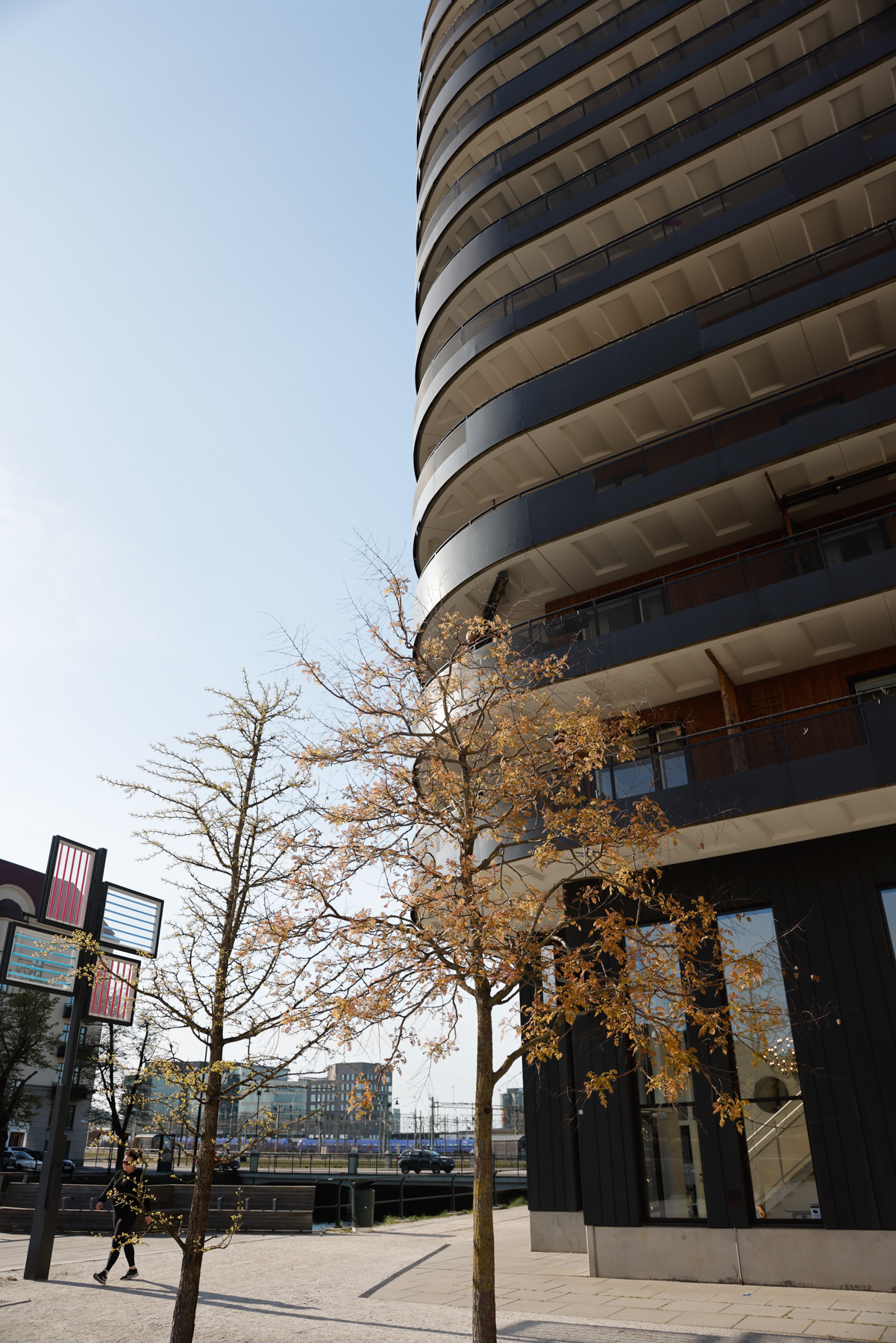 |
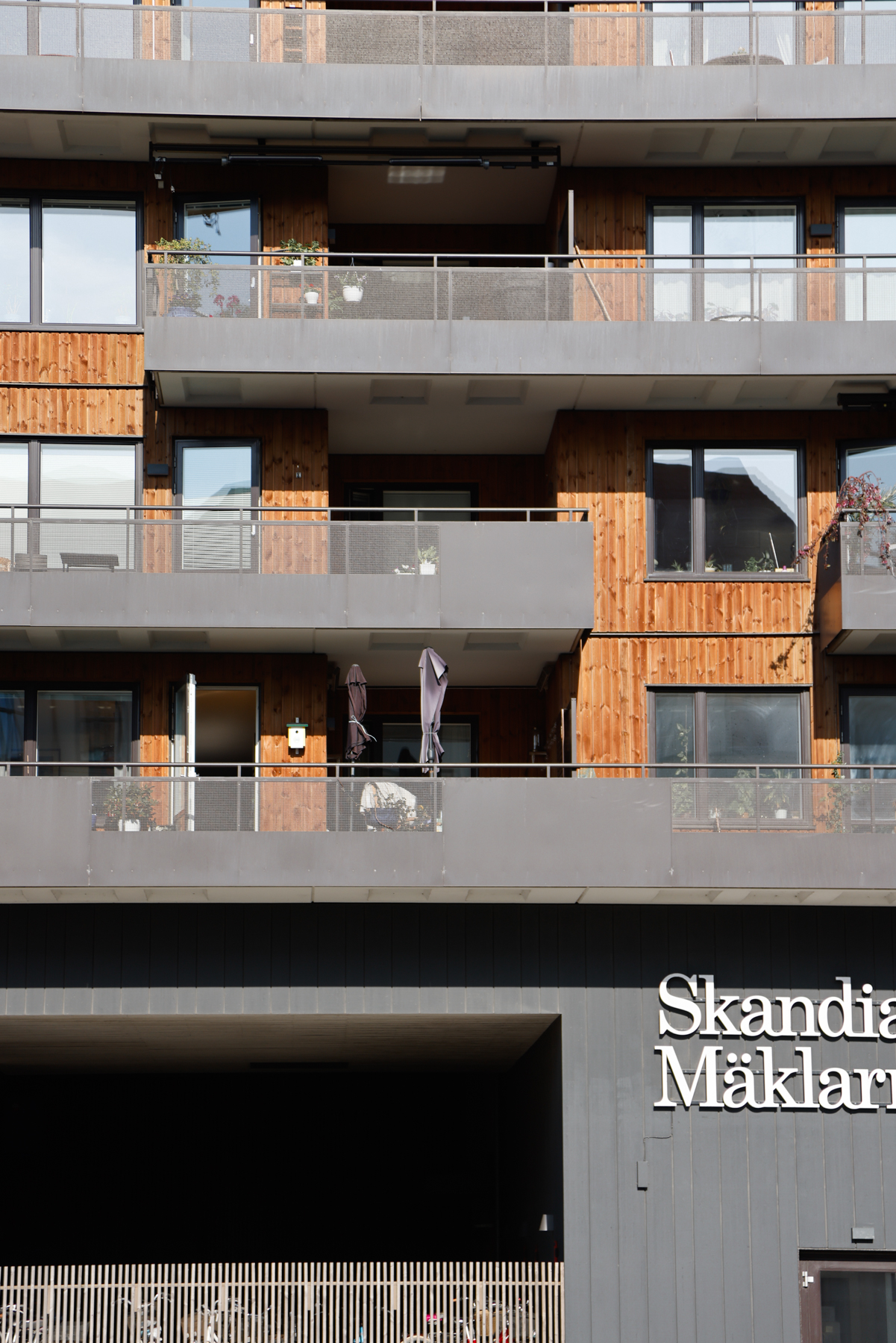 |
 |
|
Located a few blocks east of the central railway station, the 12-story Slussplan building by White Arkitketer, completed in 2013, contains rental and condo apartments and ground floor commercial space.
The exteriors feature a varied palette of materials and forms including multicolored masonry, wood, metal, continuous balconies, and rounded corners; the last a trait it shares with the Malmö Rowing Club building across the street.
Malmö city planners coordinated the building’s development with a new park immediately to the south, which opened in 2015. Designed by Mandaworks design studio, Slussplan Park includes plantings, seating, artwork, and an esplanade running along the Östra Förstads Canal. Given that this neighborhood has few public green spaces, part of the reason for its inclusion in the project was to provide a public benefit for the community.
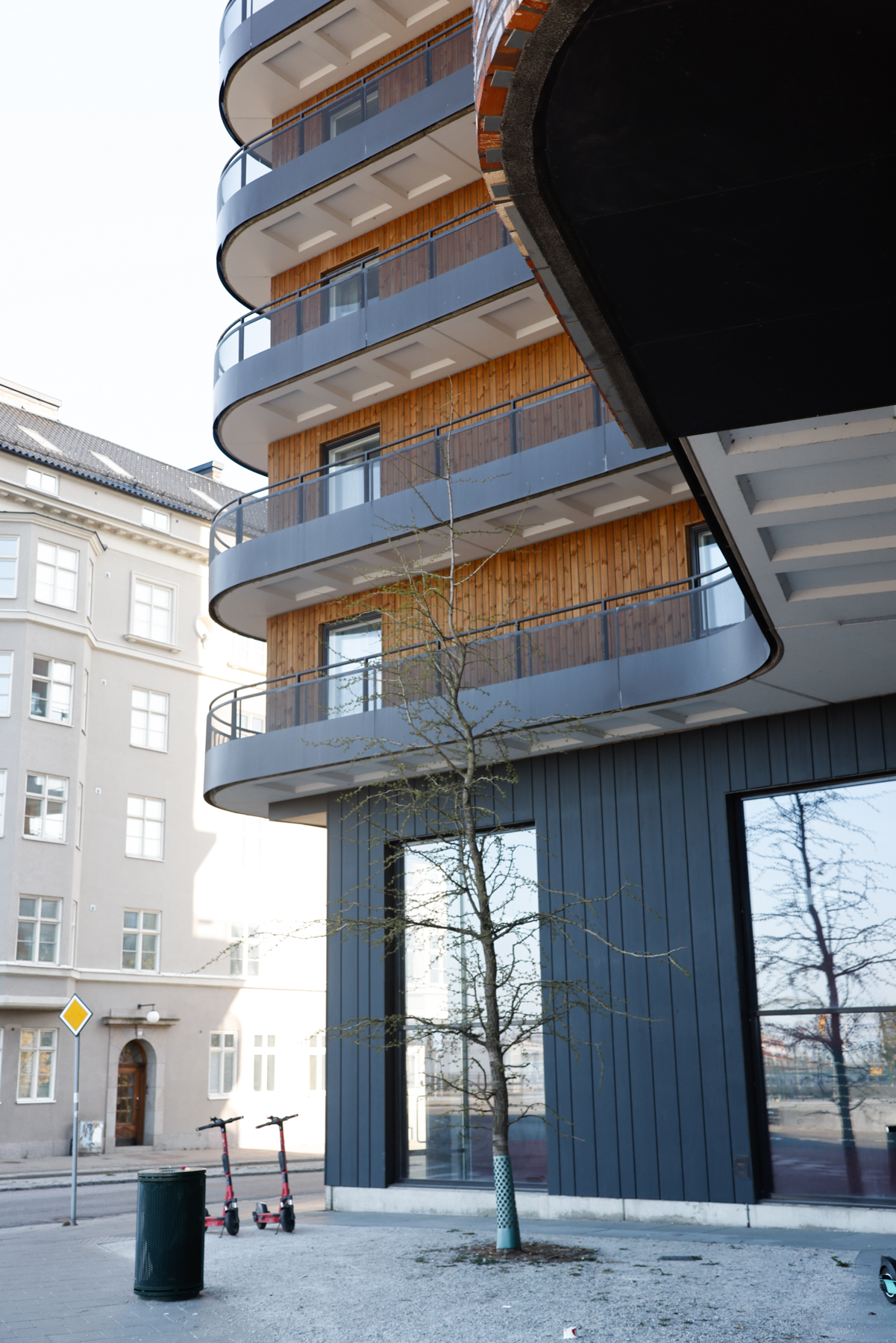 |
 |
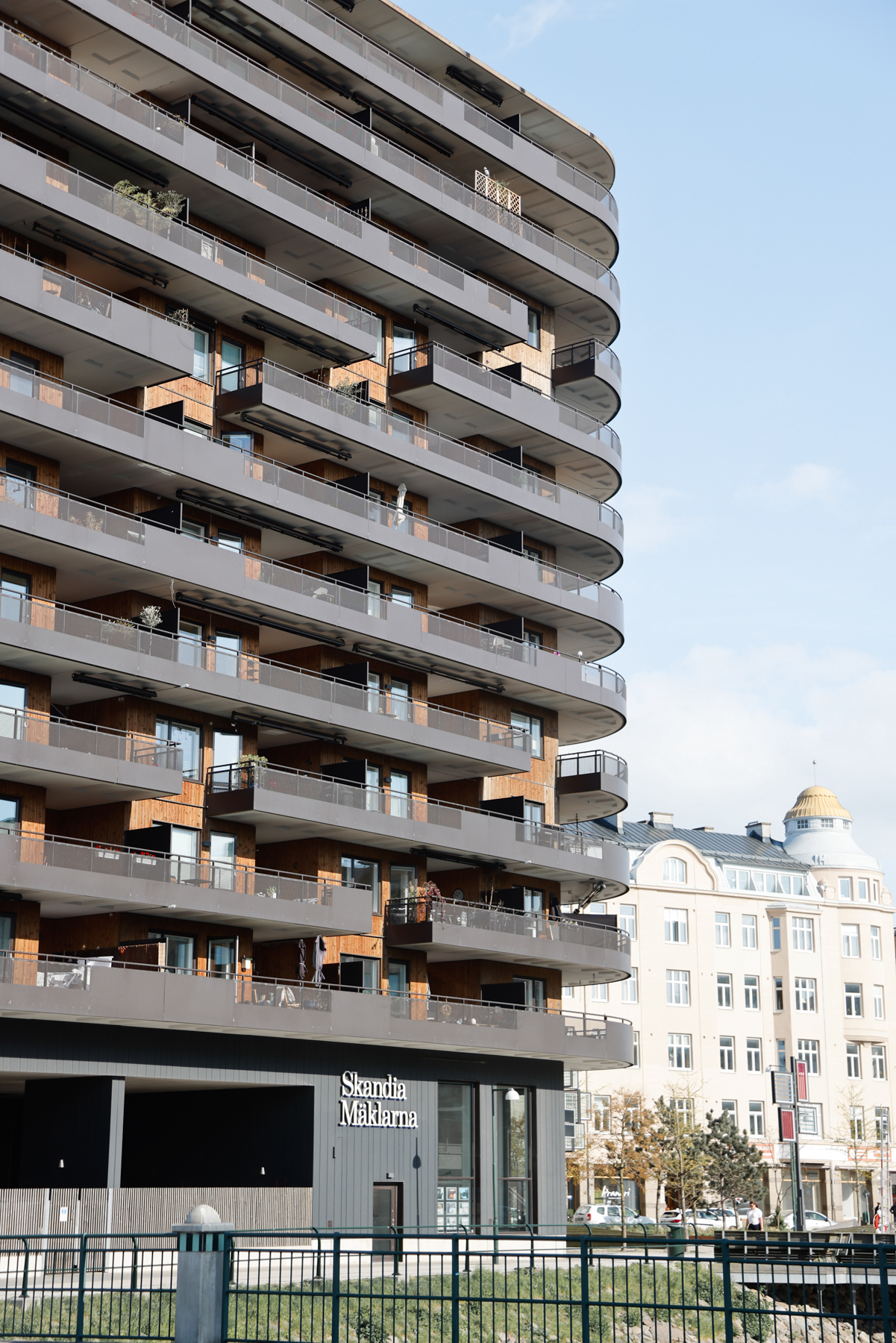 |
 |
Slussplan
Slussplan 1
211 30 Malmö
 Malmö Saluhall (1898, 2016)
Malmö Saluhall (1898, 2016)
Malmö Saluhall, a hip foodie destination that opened in 2016 in the Western Harbour, presents interesting similarities and contrasts with Slussplan. It was also built on the site of a former transportation facility, in this case a warehouse from the 1890s that architect Peter Boisen designed in tandem with the nearby Western Train Station (the latter is now a restaurant and bar).
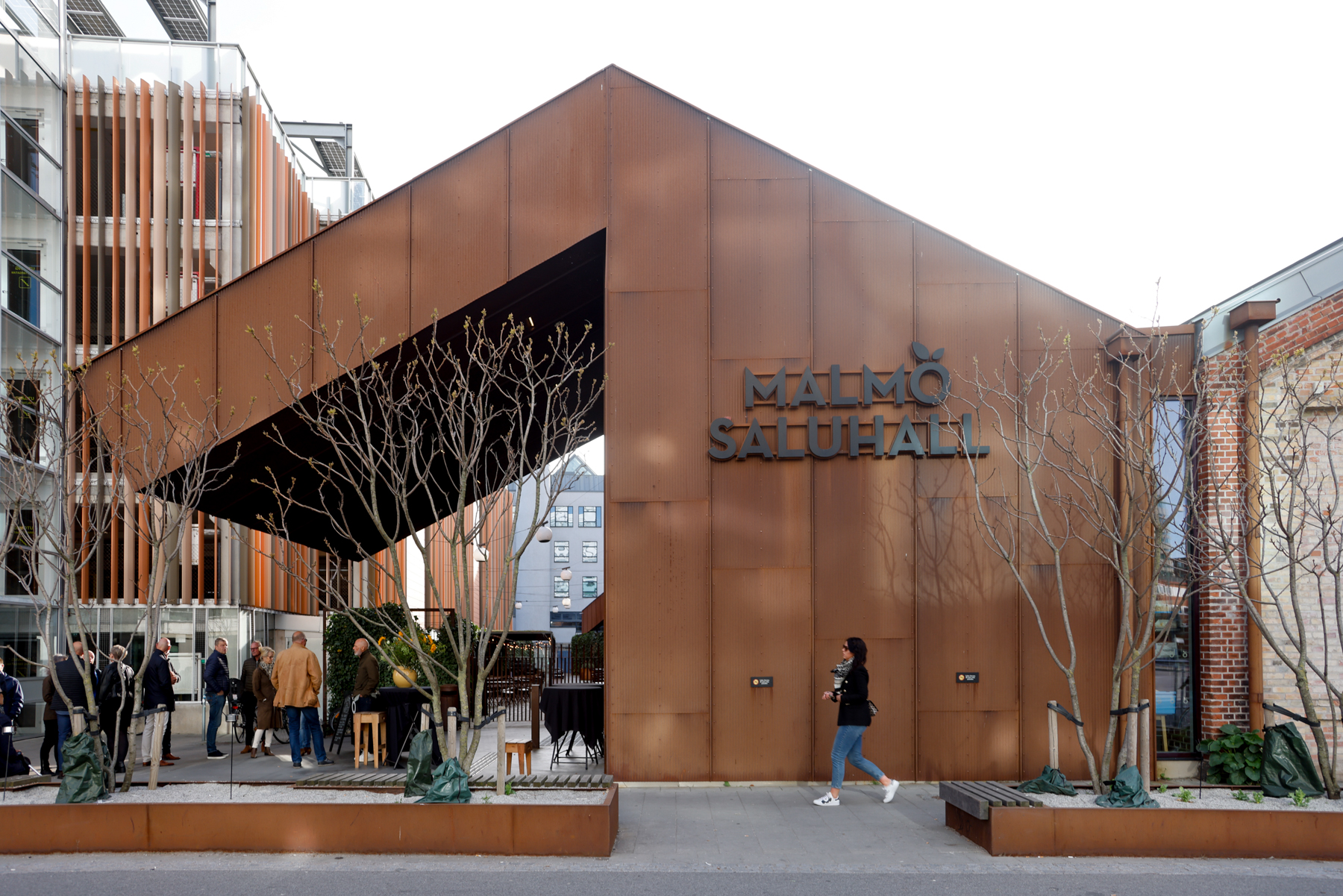 |
|
 |
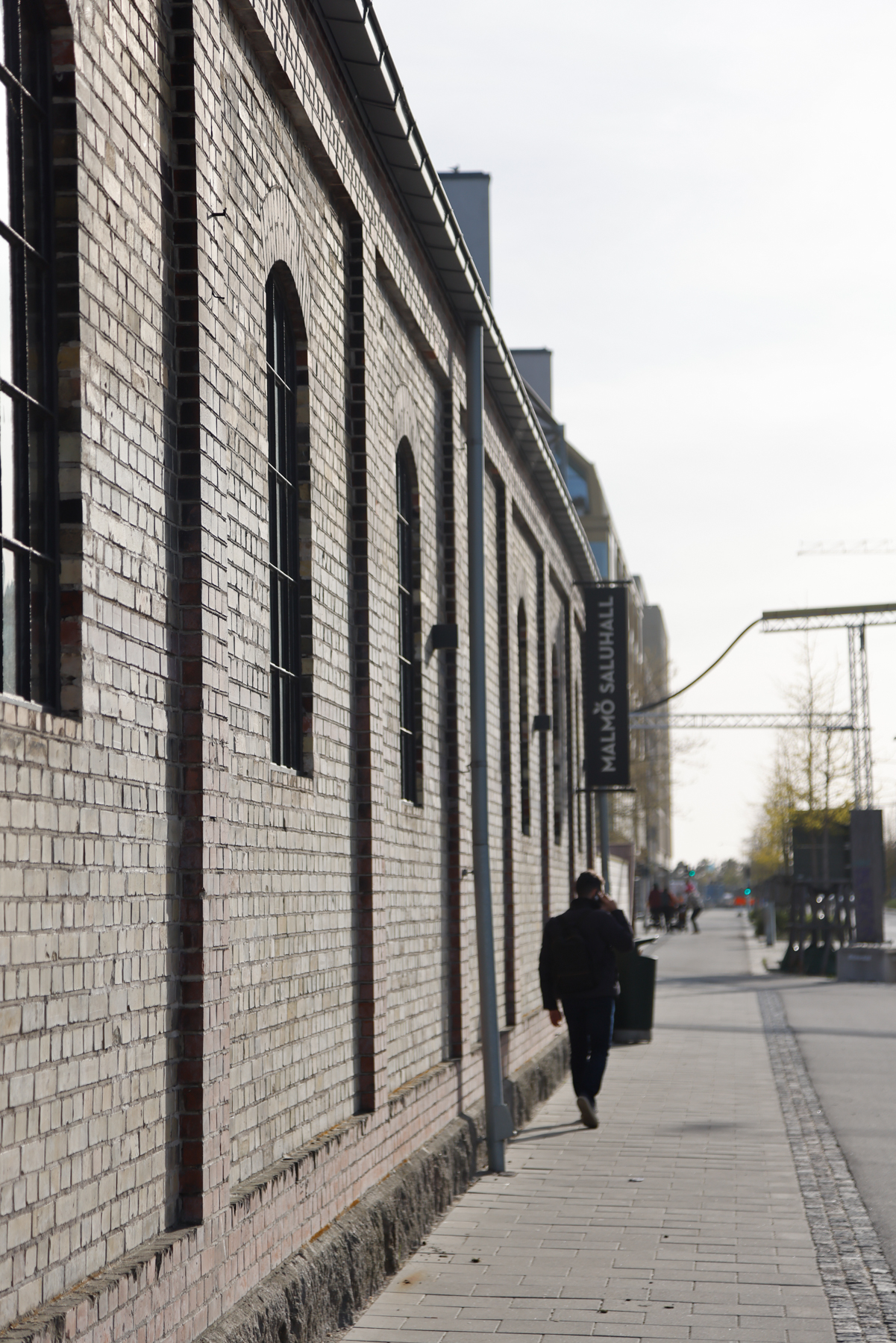 |
However, here the city required preservation of the warehouse’s surviving brick walls. Wingårdh Architects pivoted off this architectural legacy, capping the walls with a historically appropriate new sloped roof. They also added a new structure alongside it with a similar profile and a corrugated steel facade that complements the original building without imitating it.
The corner site also interfaces well with its urban surroundings. Large windows enclose what was once an arched entryway, providing views between the building interior and the street. At the other end of the site, an outdoor patio is accessible directly from a public sidewalk. Custom furniture and other furnishings by design firm Kjellander Sjöberg unify the food hall’s different sections.
 |
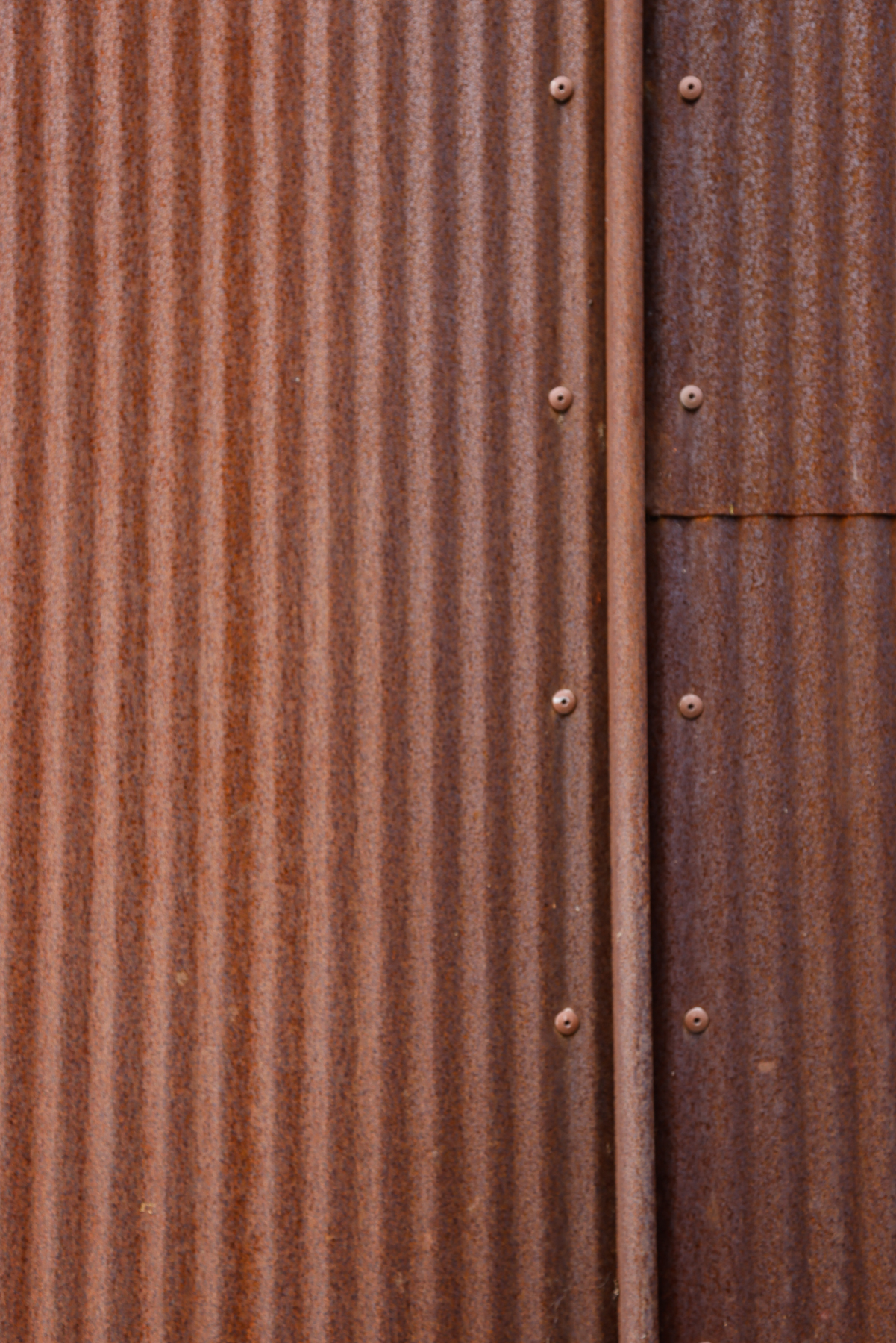 |
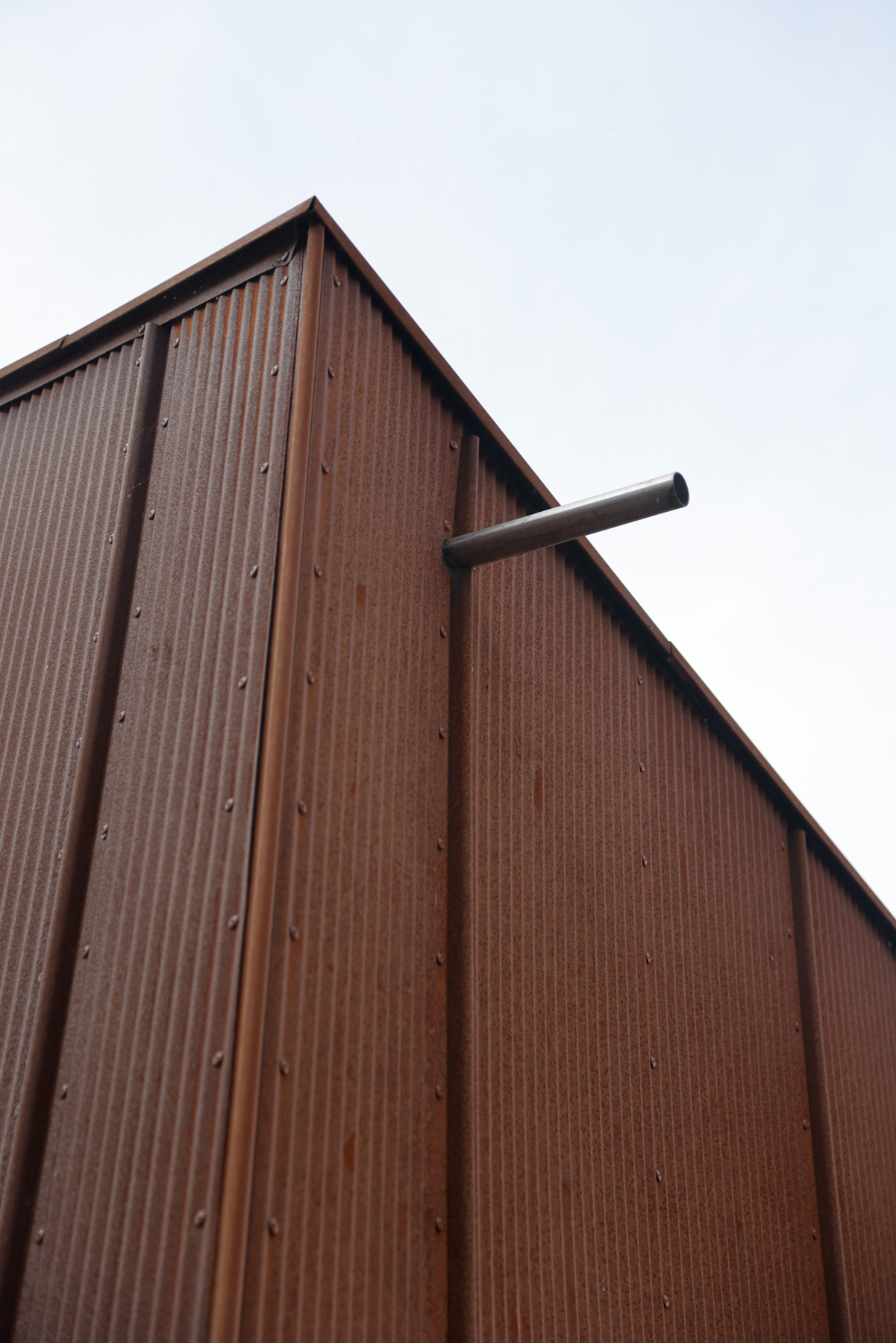 |
 |
Malmö Saluhall
Gibraltargatan 6
211 18 Malmö
Want more architecture? See these hidden passages in Copenhagen, Copenhagen architectural gems, architectural gems of Stockholm, and the most sustainable buildings in Copenhagen.
Photography by Freya McOmish.

